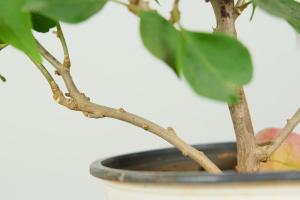Ramet propagation of purple backed taro
With the growth of purple backed taro, the plant becomes larger and larger. If it grows vigorously, the pot will be changed every 1-2 years. Therefore, ramet propagation can be carried out in combination with pot change. When the temperature rises in spring, it can be divided into plants. If the temperature and humidity are suitable, it can also be carried out throughout the year
Remove the plants of purple backed taro from the basin and soil, and cut the clustered plants along the growth direction of underground rhizomes with a knife, preferably with stems and leaves or leaf buds. It can be divided into several clusters, and then planted in pots respectively. Place the planted purple backed taro in a shady place for maintenance, control the water, and water it normally only after it returns to normal growth

Cutting propagation of purple backed taro
Purple backed taro will also often adopt the method of cutting for propagation. Generally, the cutting propagation of purple backed taro can be carried out at any time when the temperature is not lower than 20 ℃
The cutting propagation of purple backed bamboo taro generally uses the top tender shoot, selects the tender shoot with a length of 10-15 cm, and intercepts it. Observe the size of the leaves. Generally, one-third or one-half of the leaves shall be reserved. The cuttings shall be treated and placed in a cool place to heal the wound, or a little rooting powder shall be used to accelerate the rooting of the cuttings
The cuttings of purple backed taro were treated and inserted on the seedbed with a plant spacing of 5 × 10 cm is preferred. The seedbed can be made of permeable soil mixed with matrix containing less organic matter such as river sand, vermiculite or perlite. The soil should be disinfected before planting. After cutting, the purple backed taro should be covered with 60% shading net to maintain appropriate temperature and air humidity. Its management method is the same as that of ramet propagation
After cutting, purple backed taro generally has 30-50 natural roots, but the survival rate of cutting is not as high as that of ramet propagation, which is generally about 50%


 how many times do yo...
how many times do yo... how many planted tre...
how many planted tre... how many pine trees ...
how many pine trees ... how many pecan trees...
how many pecan trees... how many plants comp...
how many plants comp... how many plants can ...
how many plants can ... how many plants and ...
how many plants and ... how many pepper plan...
how many pepper plan...





























